Diving in Mozambique/Manta Reef
The dive site Manta Reef is an offshore rocky reef with coral in the Guinjata Bay area, near Inhambane in Southern Mozambique.
Understand
This is a site with lots of fish and invertebrates, and has three manta cleaning stations. It has become famous for close encounters with manta rays.
Position
- S23°58.930' E035°31.342'
- About 4km north of Ponta Gumula and 10.5km north of the launch site at Guinjata Bay
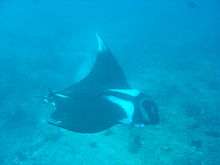
Name
The name "Manta Reef" is a reference to the Manta rays thet are often seen there.
Depth
- Maximum depth is about 30 m
- Average depth about 21 m
- The top of the reef is about 18m.
Visibility
20m visibility is not uncommon.
Topography
Scenic topography, comprising a tabular rock reef bordered by sand bottom. Most of the reef is bout 3 or 4m high with relatively flat top. Edges quite scalloped and ragged with outcrops and boulders with crevices and overhangs.
To the north is Manta Pinnacles, which is a massive rock that rises from about 26 m on the sand to 18 m on top. There is a wall of 8 m with a swim-through and a large overhang.
To the south there is a wall that drops down to 30m on the sand, with lots of cracks and ledges.
Geology: Soft sedimentary rock, probably sandstone. Strike unknown, Dip almost horizontal.
Conditions
Currents and surge rarely affect this reef, but occasionally a current may make it difficult to follow a planned dive profile, and the dive plan may be altered to suit conditions.
Get in
The site is only accessible by boat
The site is 4.2 km from Coconut Bay Beach Launch Site, about 10.2km from Guinjata Bay beach launch site, and about 24km from Barra Lodge.
See


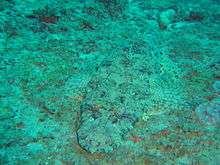
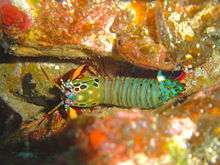

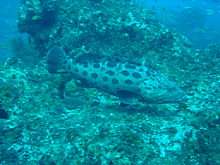
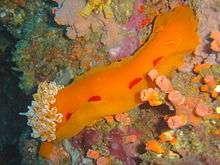

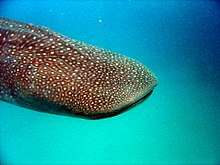

Marine life
Mantas! Large variety of reef fish and various invertebrates.
There are three cleaning stations that are regularly used by Mantas. To the north is Manta Pinnacles. A large Potato bass is resident in this area. Manta Canyon is another station where mantas are cleaned by Cleaner wrasse, Goldies and Butterflyfish.
Fish seen at this site include: Potato bass, Bluebanded snapper, Guitarfish, Parrot fish, Scorpion fish, Coachman, Big scale soldier, Trumpet fish, Two bar clownfish, Longnose butterfly fish, Raccoon butterfly fish, Threadfin butterflyfish, White spotted butterflyfish, Gorgeous gussy, Pearly butterfly fish, Goldies, Brownspotted rock cod, Moorish idol, Chocolate chip, Devil ray. Boxy, Longhead flathead (Crocodile fish), Leopard and Giant morays, Scorpionfish, Flame goatfish, Powder blue surgeon, Blue tangs, Triggerfish, schools of Yellow snappers, Bigeyes, Longnose hawkfish, and Fusiliers.
Invertebrates seen at this site include: Thistle soft coral, Daisy soft coral, Pink arch sponge, plate corals, Turret coral, Mushroom coral. Blocked starfish, Crown of thorns star, Olive green warty star, Black long spined urchin, banded feather stars, Black sea cucumber, Sandy sea cucumber, a large pinkish cucumber with dark blotchy back, Giant anemone, various sponges, sea squirts, White feather duster worms, Peacock shrimp, Spanish dancer nudibranchs, and eggshell cowries,
The boat ride also offers the opportunity to spot whale sharks and dolphins.
Photography
Macro, wide angle, and anything in between. Artificial lighting will bring back the true colour.
Routes
Follow the divemaster. Dives at this site are almost exclusively organised by operators who supply a divemaster to guide the dive, and who will show you the route.
Stay safe
Hazards
No site specific hazards known
Skills
Good buoyancy control recommended.
Equipment
DSMB and reel can be useful if you have to surface away from the group.
Back to Diving in Mozambique